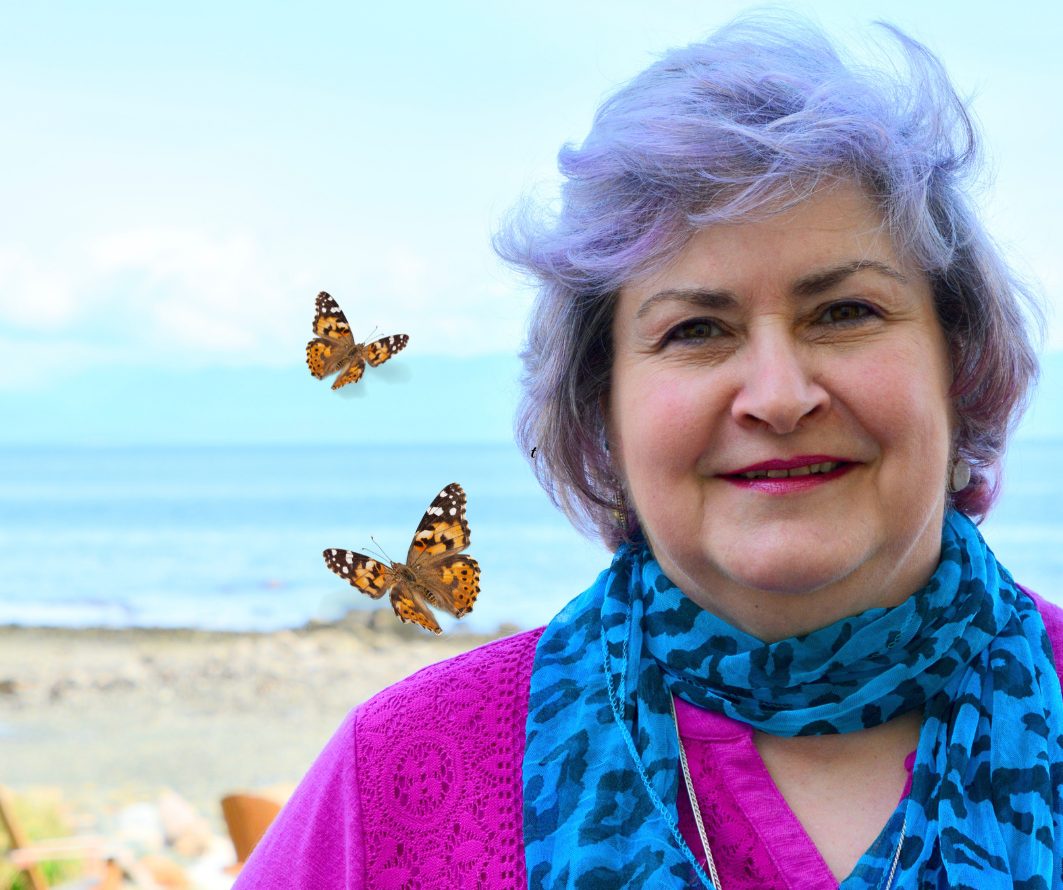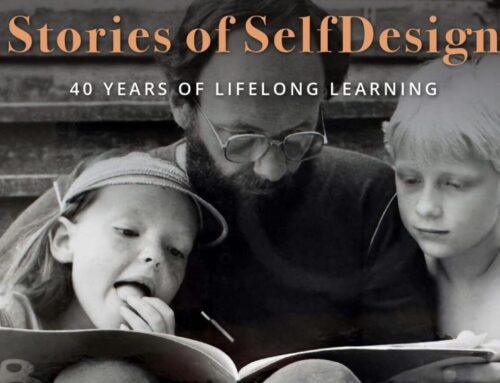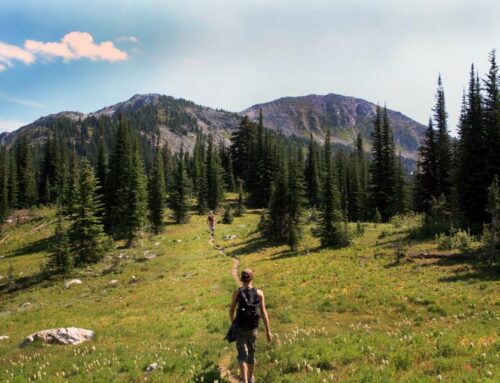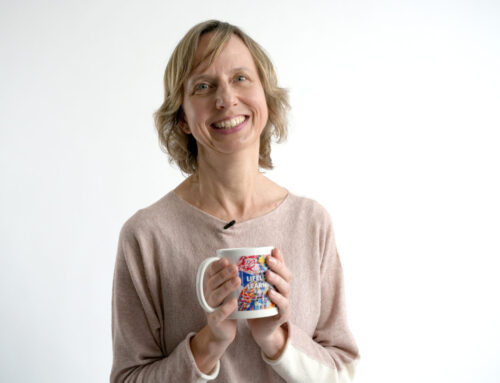When Janice Green, SelfDesign Education Program team lead, heard that one of SelfDesign’s Operations contractors was an expert on raising butterflies and gardening for butterflies, she immediately thought, “That would make an excellent event for our learners.”
This week, on Earth Day, SelfDesign and contractor Adele pilots an event in which she will share her passion for butterflies and butterfly gardening with our learners in kindergarten to grade 7.
“Personalized learning is a hallmark of SelfDesign,” Janice says. “We encourage learners to explore their interests and follow their passions as they learn about the world.”
And, Janice says, Adele – the SelfDesign contractor with a passion for butterflies – shows learning doesn’t stop at the end of grade 12 or when you finish university.
“Bringing Adele in to share her interest with our learners and get them started on cultivating their own butterfly gardens is a great way to show that in a very real way.”
Adele LaRiviere currently is a member of SelfDesign’s Communications and Marketing team. For over a dozen years, she raised butterflies for release and education and even wrangled butterflies for film and television commercials. She is also a past vice president of the Canadian Butterfly Breeders & Exhibitors Association.
Butterfly gardening
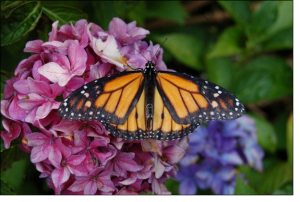 “You don’t need to have a big garden to create a butterfly-friendly environment,” Adele says. “You can make a butterfly garden in a container on a patio or balcony or on your front porch. You can even hang some plants outside and still have the satisfaction of seeing butterflies come to feed and lay eggs, and of watching butterflies go through their life cycles on your plants.”
“You don’t need to have a big garden to create a butterfly-friendly environment,” Adele says. “You can make a butterfly garden in a container on a patio or balcony or on your front porch. You can even hang some plants outside and still have the satisfaction of seeing butterflies come to feed and lay eggs, and of watching butterflies go through their life cycles on your plants.”
Adele and her husband live full-time in a 38-foot-long recreational vehicle that they move around B.C. throughout the year.
With little room and no climate-controlled area inside for raising generations of butterflies from eggs through all their life stages, Adele no longer breeds butterflies. Instead, she keeps her passion fired through small-scale, moveable butterfly gardening.
A few pots with carefully selected and tended plants next to her door attract butterflies looking for nectar and suitable egg-laying places every summer.
But several years ago, before the RV, back when she lived in a townhouse in the Lower Mainland, it was a different story.
A passion is born
Adele got her start in raising butterflies by accident. She was in the midst of a mental health crisis in the late-1990s and, even under a doctor’s care, wasn’t responding to the standard treatments.
On the days when she was feeling up to it, she’d go on the computer looking for information that might help her.
“One day, I found a website that I thought was called “Transmutation,” she says. “I didn’t bookmark it – because it was 1998 and who knew you needed to bookmark things? But when I went back to find the site, I put in “transformation,” and a butterfly website came up. I was just amazed. I started to read about butterflies and how to raise them, and I was so interested that when my husband came home from work, I told him, ‘I want to raise butterflies. I want to find some caterpillars and raise some butterflies.’”
She bought 16 caterpillars and some food for them from a supplier in the Lower Mainland.
“Within about three months, I had 1,000 butterflies and 750 caterpillars… and no business plan.”
Butterfly therapy
As she focussed on caring for the insects in all their life stages – eggs, the various caterpillar stages, chrysalises, and breeding adult butterflies – her depression lifted.
They need constant care, she says.
“You have to transfer the caterpillars onto the artificial diet food after they’ve hatched and they’ve eaten their egg sac. I’d start after supper and still be doing that at 3:00 am – still working, moving them one by one over to their food.”
If she didn’t move them to their food, they wouldn’t eat and they would die. If she didn’t clean their aviaries every day, they could get diseased and die. If she didn’t monitor and adjust the humidity in their aviaries, disease would set in and the caterpillars would die.
“I just became very focused on their care,” she says. “And without being aware of it, my depression started to lift. So, yes, butterflies helped cure my depression. I wouldn’t say it’s the standard treatment.”
Butterfly business
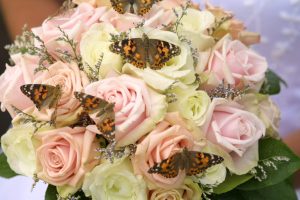 Adele turned her newfound interest and energy into a business. Her dining room became a butterfly-rearing room. She created aviaries from bridal netting and embroidery hoops to protect and contain the caterpillars and the plants they feed on. She sourced the plants the butterflies needed from greenhouse operators who didn’t use pesticides or other chemicals that harm butterflies to grow their stock.
Adele turned her newfound interest and energy into a business. Her dining room became a butterfly-rearing room. She created aviaries from bridal netting and embroidery hoops to protect and contain the caterpillars and the plants they feed on. She sourced the plants the butterflies needed from greenhouse operators who didn’t use pesticides or other chemicals that harm butterflies to grow their stock.
“Pesticides kill caterpillars and butterflies,” she says. “If I see a garden without butterflies, I know something is wrong – some chemical is being used. And those chemicals kill more than butterflies. They kill bees, dragonflies, ladybugs – all the bugs essential for pollination and for keeping other insects in check.”
Soon, Adele was invited to attend the biggest wedding show in Vancouver – with her butterflies – as a special guest. She started selling butterflies for release at memorials and funerals, and at weddings, anniversaries, and celebrations. Schools started contacting her to do presentations, then garden clubs, seniors’ centres, and community groups.
Then Hollywood called, and she launched herself as a part-time butterfly wrangler.
She also networked with other butterfly breeders and helped form the Canadian Butterfly Breeders & Exhibitors Association. As one of the founding members, she helped develop standards, best practices and a code of conduct for the butterfly-raising industry in Canada.
After some 15 years in the business, Adele scaled back. She stopped breeding butterflies when she and her husband sold their home and moved into the RV.
“It was a wonderful experience. I met all kinds of people and had lots of different experiences,” she says. “But the one that has continued through it all is my love of butterflies and of talking about them.”
Sharing passion
Janice and the rest of SelfDesign’s Education Program team heard about Adele through SelfDesign’s informal grapevine. A contractor on the IT team’s help desk who had helped Adele with a computer issue learned of her interest in butterfly gardening and mentioned it to a member on the Education Program team. That person passed the information along, and so on.
“Everyone of us has interests and passions that most people are unaware of,” Janice says. “It’s wonderful that Adele is willing to share hers with the SelfDesign community, and the fit with Earth Day really works.”
If Friday goes well, Adele’s workshop for SelfDesign learners may be offered again in coming years.
That, Adele says, opens up opportunities to tweak the offering each year to offer something slightly different. This year, the focus is on growing butterfly gardens in general, but next year, for example, “We could look more closely at monarch butterflies and how to set up monarch way stations” to help the species along their migration route and in their breeding areas, Adele says. “Monarchs are in trouble around the world. Here in B.C., they are found only at the very southern end of the province. But they’re an iconic species. When people think ‘butterflies,’ they usually think of monarchs.”
Janice says, seeing Adele share her interest in butterfly gardening with the community may inspire other SelfDesign contractors to speak up and share their passions.
“The SelfDesign community has a wealth of talents and expertise,” Janice says. “We want to give our community members an opportunity to talk about and share those interests and passions, if they want to. If they fit with SelfDesign’s approach and needs, we’re happy to support sharing them with our learners and other contractors, too.”
Learn more about SelfDesign’s approach to learning
Read about other great projects and activities our learners have undertaken to help the environment

